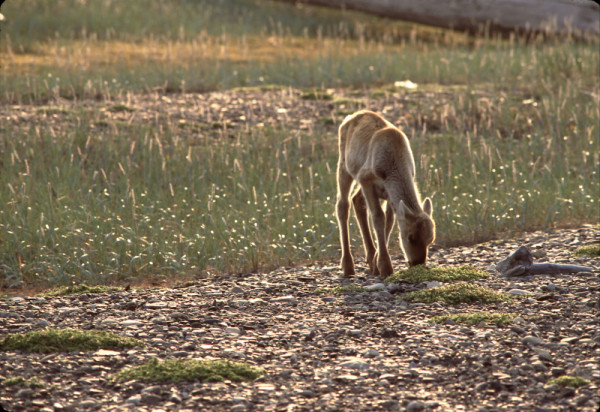Keeping mining development out of the caribou nurseries
Less than half of Canada’s barren-ground caribou remain. Your donation will support WWF-Canada’s efforts to protect their calving grounds and ensure this iconic species remains a thriving part of the Arctic.
Barren-ground caribou populations across the Canadian Arctic are on the decline. For decades WWF, northern conservation partners, and Inuit hunters have called for the protection of extremely sensitive calving grounds. Protections of calving grounds is one of the reasons why stakeholders are meeting this week in Rankin Inlet for continued discussions on the Nunavut Land Use Plan.
“Protecting caribou calving and post-calving areas is not only a necessary requirement for maintaining healthy caribou herds, it is the right thing to do,” said Earl Evans, chair of the Beverly and Qamanirjuaq Caribou Management Board. “How could it possibly be okay to plunder, disturb and damage a nursery?”
Barren-ground caribou play an integral role in the lives of many Inuit communities. Inuit have been relying on caribou for traditional food and clothing for millennia, and continue to do so today. In a territory where food prices can be astronomical, access to caribou as a food source is not just a matter of cultural identity, but food security. WWF is working with Inuit partners to promote actions that promote plentiful and accessible caribou herds so hunters can engage in sustainable hunting practices.
Canadian barren-land caribou populations on the decline
Canadian barren-land caribou populations are not in good shape. The Bathurst herd in the Northwest Territories, for example, has dropped from 472,000 individuals in 1987 to 35,000 in 2012, and the Baffin Island herd is down 95 per cent, to only 5,000 individuals. Barren-ground caribou herds undergo massive natural fluctuations in herd sizes. But that alone can’t explain the variation.
Why the decline then? Caribou are the victim of what we call ‘cumulative effects’, meaning there are multiple environmental and human-caused stressors that are contributing to their decline. The Arctic is experiencing climate change about twice as fast as the rest of the world, warming habitats and changing the vegetation and presence of biting flies. But industrial development in the region also has the potential to cause habitat loss and disturb caribou during sensitive parts of their lifecycle.
Caribou are extremely sensitive when on their calving grounds. Even small disturbances trigger failed reproduction, calf abandonment and mortality, and reduced body condition of adult females, which can lead to declines in population.
Nunavut Land Use Plan offers major caribou conservation opportunity
Future development plans must respect the sensitivity of these areas, and we must not allow older mining claims to threaten the long term persistence of the herds. Unfortunately, even if caribou calving grounds are designated as a Protected Area under the Nunavut Land Use Plan, a current position of the federal government allows the grandfathering of all prospecting permits and mineral claims to the mining stage, including those in core caribou calving grounds, regardless of protected area status. Grandfathering mining rights undermines the planning process and directly opposes the views of regional wildlife boards and local hunters and trappers in the Kivalliq region of Nunavut. WWF Canada is working with partners to challenge this position and offer alternative suggestions at the planning level.
WWF supports designating all caribou calving and post-calving areas, key access corridors, and freshwater crossings as Protected Areas, regardless of their mineral potential. This does not mean that WWF is opposed to responsible mining activities in other areas, but the ecological and cultural importance of caribou to Nunavut deserves protection, especially in light of the recent downturn in caribou numbers across Nunavut.
The Nunavut Land Use Plan represents a huge conservation opportunity to help safeguard many of the barren-ground caribou herds of the North, and to allow for population growth of the great herds to levels that can support sustainable harvest and perhaps one day reach historic levels.
The public hearing of the plan is scheduled to take place in November 2016.



